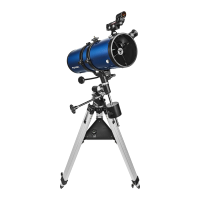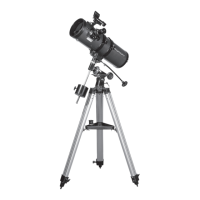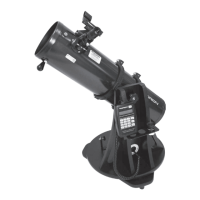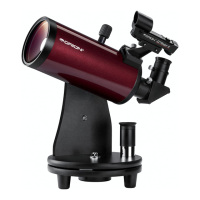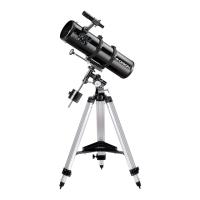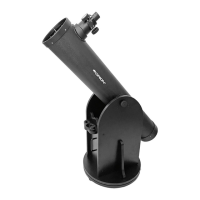Getting Started
Please read the instructions and practice with the telescope inside before you take it out in the
dark. The image will be much better if you let the telescope cool down to air temperature before
you start observing.
This is a “Push-to” telescope. Once you find what you are looking for, you can either watch the
object move through your “field of view” (what you see through the eyepiece) and then reposition
the telescope, or keep pushing the scope to hold the object in the center of the eyepiece. Objects
appear to move across the field of view faster at higher magnifications. This is because the field of
view becomes narrower. Like many reflector telescopes, the image in the eyepiece is upside-
down. When looking at star charts you will have to keep this in mind. The Moon map on this
telescope is “flipped” so it matches what you see in the eyepiece.
7
This is important enough to say again:
WARNING: Never look directly at the Sun through this telescope or its finder scope — even for an
instant - as permanent eye damage could result. Do not point the telescope at the Sun, as parts will melt.
Young children should use this telescope only with adult supervision.
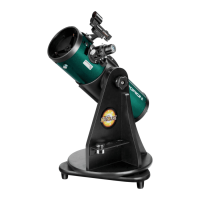
